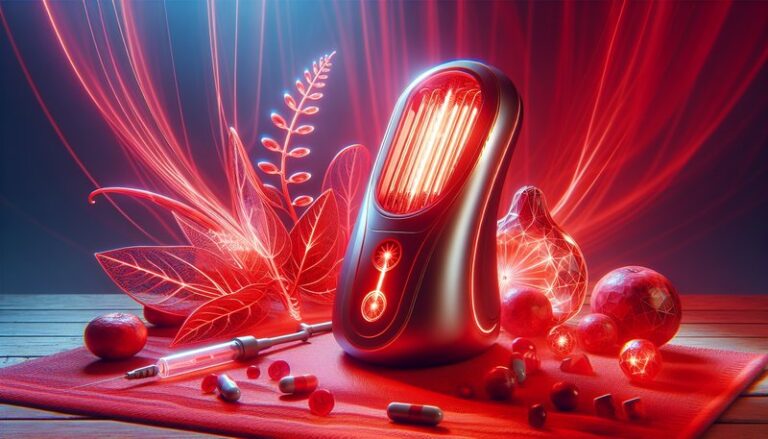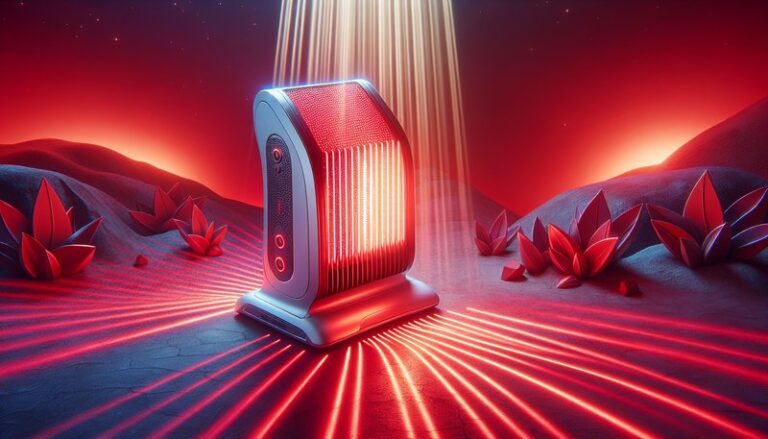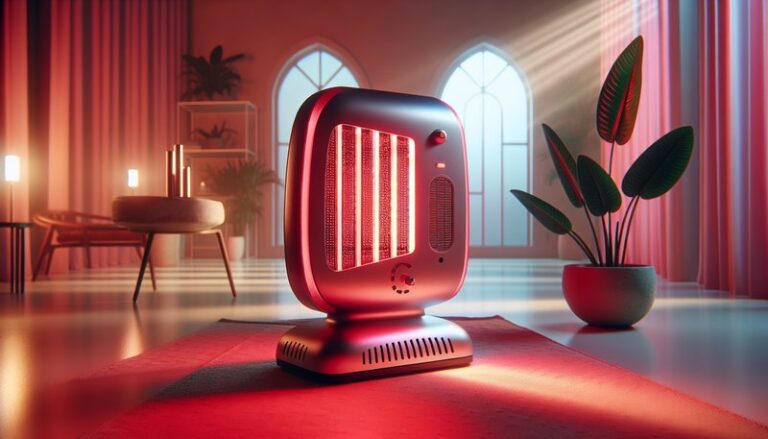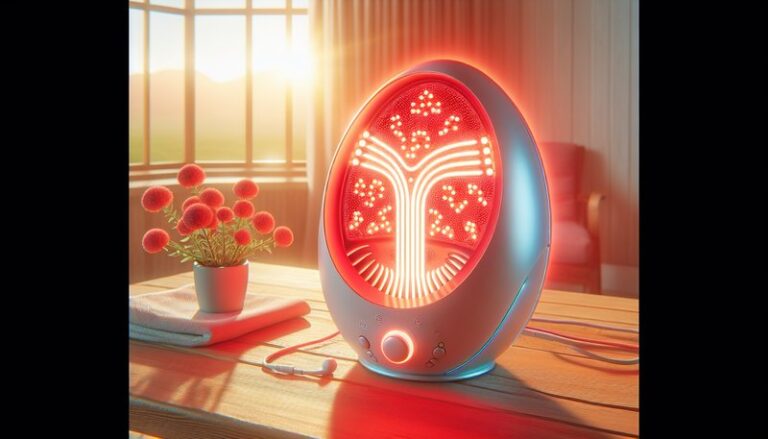Does Red Light Therapy Improve Mood?
Have you ever wondered if a simple light could brighten your mood?
In this article, we will explore the intriguing connection between red light therapy and mood enhancement. We’ll delve into how this therapy works, its benefits, specific actions you can take, alternatives available to you, and ultimately, whether it’s a recommended option for improving mood and mental well-being.
Key Takeaways
- Red light therapy is believed to positively influence mood by promoting the release of serotonin and reducing symptoms of depression.
- It is a non-invasive treatment option with minimal side effects compared to traditional pharmaceutical solutions.
- Various clinical studies suggest potential benefits for seasonal affective disorder (SAD) and general mood enhancement.
What is Red Light Therapy?
Red light therapy (RLT) is a therapeutic technique that uses specific wavelengths of light, usually in the red and near-infrared spectrum, to target various physical and psychological ailments. This method is thought to stimulate cellular processes that promote healing, reduce inflammation, and enhance overall skin health. The therapy works by exposing the skin to low-level wavelengths of red light, typically through the use of LED devices or specialized lamps.
See the whole article Can Red Light Therapy Help Varicose Veins?
RLT has gained popularity for its applications beyond skin treatments, such as aiding muscle recovery, reducing chronic pain, and potentially improving mood. This broad spectrum of benefits makes it a topic of interest in both the medical community and among those seeking alternative wellness solutions.
What are the Benefits of Red Light Therapy?
Exploring the advantages of red light therapy reveals an impressive range of potential benefits, particularly concerning mood enhancement.
Increased Serotonin Production
One of the primary benefits of red light therapy is its ability to stimulate serotonin production in the brain, often referred to as the “feel-good” neurotransmitter. Higher levels of serotonin are associated with improved mood and an overall sense of well-being.
Reduction of Seasonal Affective Disorder (SAD)
Studies have shown that red light therapy may be effective in alleviating symptoms of Seasonal Affective Disorder, a type of depression prevalent during winter months when sunlight exposure is limited. By mimicking natural sunlight, RLT provides a viable alternative for those sensitive to changes in light exposure.
Enhanced Sleep Quality
Improving sleep quality is another significant benefit tied to red light therapy. Proper sleep is crucial for mood regulation, and RLT has been shown to help increase melatonin production, which is essential for a restful night’s sleep.
Stress Reduction
Through its impact on inflammation and cellular health, red light therapy can contribute to overall stress reduction, which is crucial for maintaining a balanced mood. When the body is under excessive stress, mental health can suffer, making stress mitigation a pivotal aspect of mood improvement.
Is it Possible to Use Red Light Therapy for Mood Enhancement?
Yes, it is indeed possible to use red light therapy specifically for mood enhancement. As a non-invasive treatment method, it can be easily incorporated into daily routines, whether through professional sessions or at-home devices. However, individual experiences may vary, and results can depend on various factors, including the consistency of treatment and the individual’s mental health status.
What are the Advantages of Using Red Light Therapy?
Several considerations highlight the advantages of utilizing red light therapy for mood enhancement:
Accessibility
RLT devices are widely available for personal use, making it easy for individuals to incorporate therapy into their daily lives. Portable options enable users to easily access treatment in the comfort of their own home.
Non-Invasive and Minimal Side Effects
Compared to conventional medications for mood disorders, red light therapy is non-invasive and generally has minimal side effects. This makes it an attractive option for those wary of pharmaceutical interventions.
Complementary Treatment
RLT can be used alongside other therapies and treatment modalities, providing a holistic approach to mood improvement. Combining therapies can result in enhanced overall well-being.
What are the Things to Consider Before Using Red Light Therapy for Mood?
Before embarking on a red light therapy regimen targeting mood improvement, consider the following important factors:
Consultation with a Healthcare Professional
Always consult with a healthcare provider to ensure that red light therapy is suitable for your specific situation, particularly if you are currently under treatment for mental health conditions.
Device Quality and Safety
Not all red light therapy devices are created equal. It is crucial to research and purchase devices from reputable brands to ensure effectiveness and safety.
Treatment Consistency
Consistency is vital when it comes to seeing results. Establishing a routine that allows for regular exposure to red light therapy is necessary to reap its mood-enhancing benefits.
What are the Alternatives to Red Light Therapy for Mood Enhancement?
While red light therapy presents an exciting avenue for mood enhancement, several alternatives exist that may also be effective in improving mental well-being.
Cognitive Behavioral Therapy (CBT)
Cognitive Behavioral Therapy has proven to be effective for many mental health conditions, teaching individuals to challenge and change negative thought patterns that affect mood.
Exercise
Regular physical activity is a powerful mood booster. Exercise promotes the release of endorphins, which can help alleviate feelings of depression and anxiety.
Light Therapy (Bright Light)
Other forms of light therapy, particularly full-spectrum light therapy, are designed to treat mood disorders like SAD by simulating sunlight exposure, which can also lead to increased serotonin levels.
Conclusion: Is it Recommended to Use Red Light Therapy for Mood Enhancement?
Based on the information discussed, red light therapy can be a promising option for those looking to improve their mood. Its benefits, accessibility, and minimal side effects present compelling reasons to consider it. However, as with any treatment, it is important to approach it cautiously and in consultation with healthcare professionals to ensure it aligns with your individual mental health needs.
Frequently Asked Questions
What does red light therapy feel like?
Red light therapy typically feels warm and soothing. Most users report a comforting sensation during the treatment, with no pain or discomfort.
Get informed with Can Red Light Therapy Reduce Thyroid Nodules?
How frequently should I use red light therapy for mood enhancement?
For optimal results, many practitioners recommend using red light therapy 3 to 5 times per week for at least 15-20 minutes per session. Consistency is key to experiencing benefits.
Are there any contraindications for red light therapy?
While generally safe, individuals with certain conditions, such as skin sensitivity to light or specific medical conditions, should consult with a healthcare provider before starting red light therapy.
Can I use red light therapy at home?
Yes, many individuals successfully use red light therapy at home with personal devices designed for safety and efficacy. Ensure you follow the manufacturer’s guidelines for maximum benefit and safety.
Are there any long-term effects of using red light therapy?
Current studies suggest that red light therapy is safe for long-term use, but ongoing research is necessary to fully understand its long-term effects, particularly on mental health. Always continue to monitor your response to the therapy and consult with professionals as needed.






